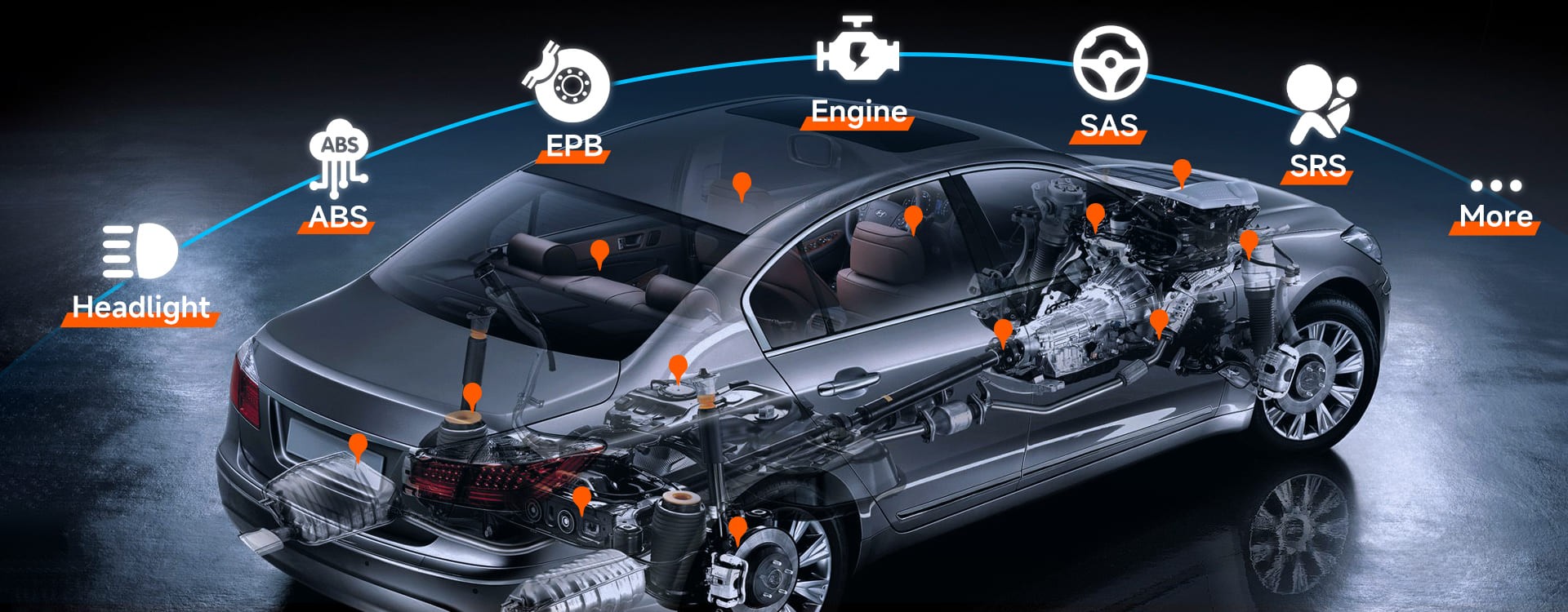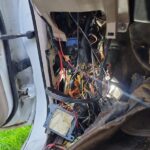A malfunctioning oxygen (O2) sensor can significantly impact your car’s performance and fuel efficiency. Utilizing an OBD2 scanner to perform an o2 sensor test is crucial for identifying and resolving these issues. This guide provides a detailed walkthrough on how to connect, diagnose, and interpret O2 sensor data using an OBD2 scanner.
Connecting and Diagnosing with an OBD2 Scanner
Modern vehicles (post-1996) are equipped with an OBD2 port, typically located under the dashboard near the steering wheel. Connecting your OBD2 scanner is a straightforward process:
- Locate the OBD2 Port: Find the port under the dashboard.
- Connect the Scanner: Plug the scanner into the OBD2 port securely.
- Power On: Turn on both the vehicle’s ignition and the OBD2 scanner.
- Initiate the Test: Navigate the scanner’s menu and select the “O2 Sensor Test” or equivalent option. Most scanners, like the FOXWELL NT909, have user-friendly interfaces guiding you through the process.
Reading and Interpreting O2 Sensor Data
The O2 sensor generates a voltage signal that corresponds to the oxygen levels in the exhaust. This data is crucial for the engine control unit (ECU) to adjust the fuel-air mixture for optimal performance.
- Voltage Range: A healthy O2 sensor should fluctuate between 0.1V and 0.9V, indicating varying oxygen levels. A constant voltage at either extreme suggests a problem.
- Response Time: The sensor should rapidly switch between high and low voltage multiple times per second. Slow response times indicate a failing sensor.
- Fuel Trim Values: Examining Short-Term Fuel Trim (STFT) and Long-Term Fuel Trim (LTFT) values provides insights into how the ECU is compensating for potential issues. Significant fluctuations in these values may point to an O2 sensor problem.
Understanding O2 Sensor Trouble Codes
OBD2 scanners provide Diagnostic Trouble Codes (DTCs) that pinpoint specific issues. Common O2 sensor-related codes include:
- P0130: Indicates a malfunction in Bank 1, Sensor 1 (upstream sensor before the catalytic converter). This often points to a faulty sensor, wiring issue, or heater circuit problem.
- P0171: Suggests a lean fuel mixture in Bank 1, potentially caused by a faulty O2 sensor providing incorrect data to the ECU. However, other issues like vacuum leaks could also trigger this code.
Diagnosing Trouble Codes: A Step-by-Step Approach
- Retrieve Codes: Use the OBD2 scanner to obtain the DTCs.
- Interpret Codes: Consult the scanner’s built-in code definitions or an online resource to understand the meaning of each code.
- Inspect Wiring and Connections: Check for damaged or loose wiring related to the indicated sensor.
- Test the Heater Circuit: If the code suggests a heater circuit issue (e.g., P0135), use a multimeter to check for continuity.
- Monitor Live Data: Confirm the diagnosis by observing live O2 sensor data for abnormal voltage or slow response times.
Avoiding Common Misdiagnoses
- Rule Out Other Causes: Codes like P0171 can be triggered by various issues beyond a faulty O2 sensor. Thoroughly inspect for vacuum leaks, fuel injector problems, and other potential culprits.
- Check for Exhaust Leaks: Leaks near the O2 sensor can cause inaccurate readings. Listen for hissing sounds and inspect the exhaust system for damage.
- Don’t Overlook the Basics: Ensure a clean air filter, a properly sealed fuel cap, and good fuel quality before assuming sensor failure.
Signs of a Healthy O2 Sensor
- Consistent Voltage Fluctuations: Voltage should steadily cycle between 0.1V and 0.9V.
- Rapid Response Time: Swift transitions between voltage levels indicate a properly functioning sensor.
- Stable Fuel Trim Values: Minimal fluctuations in STFT and LTFT suggest accurate sensor readings.
O2 Sensor Failure: Causes and Symptoms
O2 sensors can fail due to contamination, wear and tear, or heater circuit malfunction. Symptoms of a failing sensor include:
- Reduced Fuel Economy
- Rough Idle
- Check Engine Light Illumination
- Failed Emissions Tests
- Engine Misfires or Hesitation
Conclusion
Performing an o2 sensor test with an OBD2 scanner is essential for maintaining optimal vehicle performance and fuel efficiency. By understanding how to connect, diagnose, and interpret the data, you can effectively identify and address O2 sensor issues, saving time and money on potential repairs. Regular checks with an OBD2 scanner are highly recommended.



